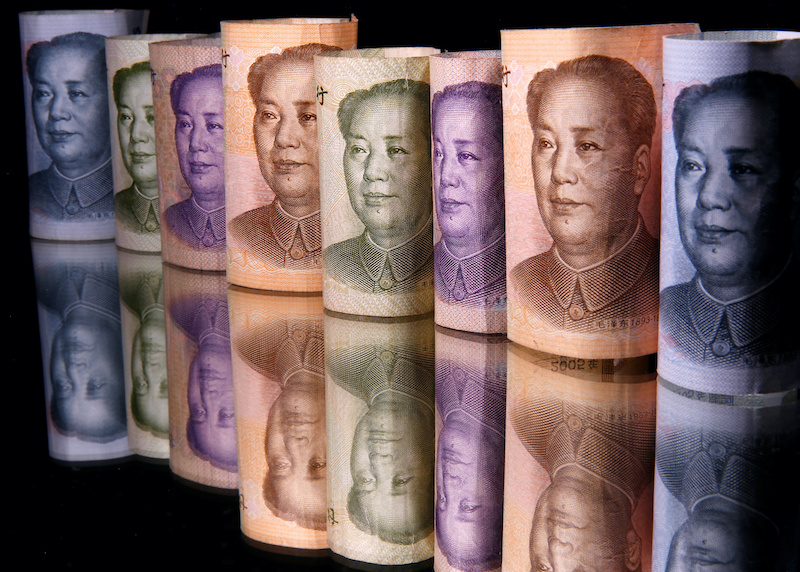The yuan weakened on Tuesday to its weakest level since mid-May – a three-month low against the dollar after weak data raised doubt over China’s economic growth.
The onshore yuan dropped 0.47% to 6.7950 per dollar, the lowest since May 16. At noon, it was changing hands at 6.7867.
“RMB sentiment was pretty fragile, as market participants perceived the PBOC’s rate cut [on Monday] as a bearish signal for China growth outlook,” wrote Ken Cheung, a strategist at Mizuho Bank.
Analysts also said the widening divergence with US monetary policy and tensions over Taiwan have spurred traders to hedge China risks and could push the yuan lower.
In the offshore market, the yuan was relatively stable on Tuesday after touching 6.80 for the first time in three months in the previous session.
ALSO SEE: Explainer: Why China’s Yuan is Weak and May Get Even Weaker
Geopolitical Risks
The gap between offshore and onshore yuan was at its widest in three months, underlining how foreign investors are more bearish on the currency than traders in China, where market is more controlled by the government.
The People’s Bank of China unexpectedly cut one-year and seven-day policy rates by 10 basis points on Monday after July activity and credit data showed a sharp slowdown in an economy hit by Covid-19 outbreaks and property sector woes.
“We do not see any improvement in China’s growth picture compared to May,” said Cheung, who sees further downside for the yuan in the near-term, adding the market could no longer have rock-solid expectations that “the worst is behind us”.
“Elevated geopolitical risk and China-US tensions could also harm capital inflow to China markets,” he also said, predicting that “hedging China risks” would once again become a key market theme.
This view was echoed by MayBank analysts, who wrote in a note to clients: “We see a risk of yuan depreciation possibly gathering momentum on a lethal combination of deteriorating macro backdrop and geopolitical tensions ahead of key political events such as the (China) Party Congress and the US mid-term election.”
- Reuters with additional editing by Jim Pollard
ALSO SEE:
Dollar at 20-Year High Amid Concern on Rates, Ukraine, China
Banks Forecast Weaker Yuan as Drive for Dollars Grows
China’s Weak Yuan Also Suggests a Weak Stock Market: UBS
























